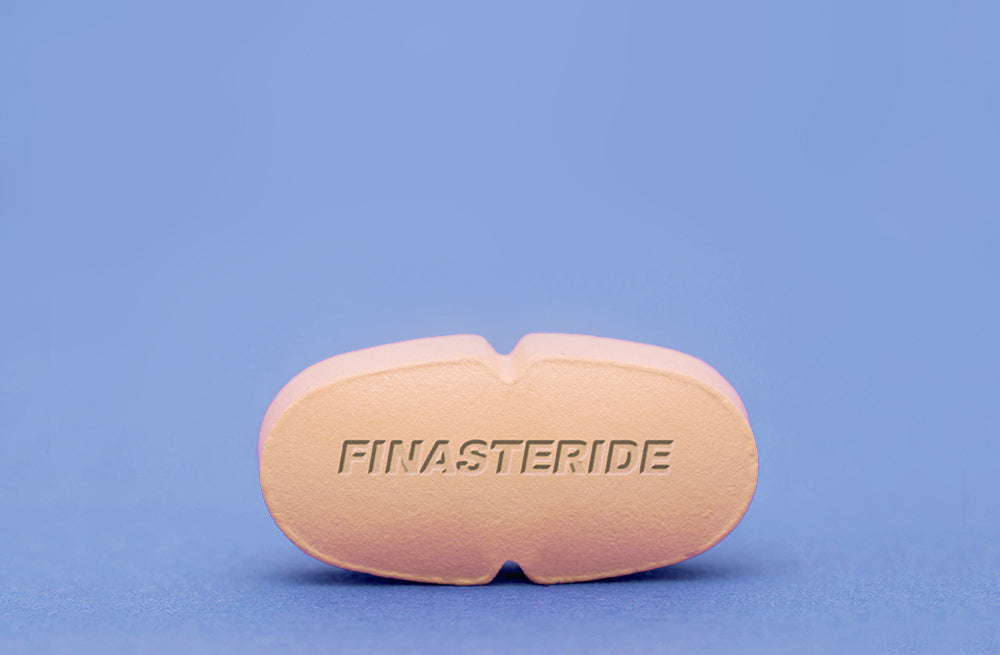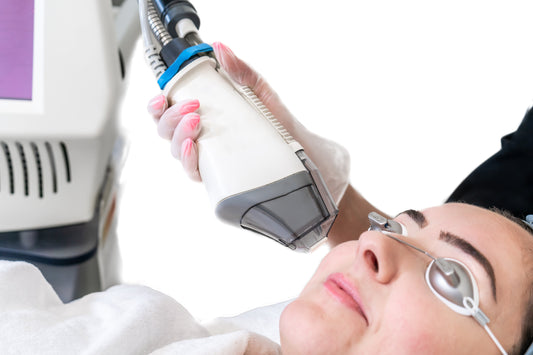More than 80 percent of men and nearly half of women experience significant hair loss throughout their lifetime.1 Finasteride is a prescription drug approved for treating enlarged prostate enlargement and male pattern hair loss. It is also sometimes used off-label to treat hair loss in women.
If you are considering using this medication, find out how it works, what finasteride side effects you should know about, and explore alternatives for hair growth.
What Is Finasteride?
Finasteride belongs to a class of medications called 5-alpha reductase inhibitors. It blocks the body's production of the hormones that cause the prostate to enlarge and your hair to stop growing.
When prescribed to treat the prostate (Proscar®), finasteride can be used alone or in combination with other medications to reduce symptoms like frequent urination and may also reduce the need for surgery. When used to treat hair loss (Propecia®), finasteride promotes hair growth in men who are balding and may be used as a supplemental treatment to hair transplant surgery.
Finasteride is prescribed orally or topically and is only FDA-approved for use in men, though some doctors do prescribe finasteride to women. The use of finasteride for hair loss in women is considered an off-label use.
What Is Finasteride (Propecia) Used For?
Finasteride (Propecia) is prescribed to slow hair loss and promote hair growth in users. In a 2-year study of 1,879 men2, 48 percent of users experienced hair growth at 1 year and 66% saw hair growth at 2 years compared with 7% of placebo recipients at each time point. Even more, hair counts in these men showed that 83% of finasteride versus 28% of placebo recipients had no further hair loss compared with baseline after 2 years. However, the study also noted a number of sexual side effects we’ll explore below.
At a higher dose, finasteride has also been shown to improve hair loss in women, but the side effects are even more pronounced and should be avoided in pregnant women or those who may become pregnant while using the medication.3
Finasteride is designed to be used long-term. If you stop taking this medication, you will likely start losing your hair again. The medication is also more useful when taken early. Studies show that users will benefit most from finasteride within 5 years of first experiencing hair loss.4 If taken too late, you may still experience baldness.
How It Works
Finasteride inhibits the conversion of testosterone, the primary male sex hormone, to dihydrotestosterone (DHT). In adults, DHT promotes prostate growth, sebaceous gland activity, male pattern baldness, and body, facial and pubic hair growth.5 Though finasteride increases the number of scalp hairs it will not increase the amount of body hair in users.
The results of using topical finasteride are similar to the results of using oral finasteride in terms of reducing significant hair loss.6 However, oral finasteride is associated with more adverse side effects.
Common Side Effects Of Finasteride
The most common finasteride side effects are sexual and include:7
- Decreased fertility
- Low libido
- Ejaculation problems
- Inability to have or maintain an erection
- Testicular pain
- Depression
- Increased risk of prostate cancer
Sometimes adverse side effects persist in men after they’ve taken the medication, a condition known as post-finasteride syndrome.8 Symptoms may also include elevated anxiety and brain fog.
Premenopausal women are discouraged from taking finasteride because the medication may cause birth defects if she is or becomes pregnant. This is even true if she touches broken or crushed tablets.
UnTangled Essentials Kit
• Engineered to work in tandem
• Visibly fuller hair in 90 days
Finasteride Pros VS Cons For Hair Loss
Finasteride does have a positive track record when it comes to the medication’s efficacy. But it’s important to take side effects into consideration, especially if you hope to have a child in the future. In summary, here are the main finasteride pros and cons.
Pros:
- Slows hair loss and promotes new growth
- Can be used to supplement other hair loss treatments like hair transplant surgery
- If taken consistently, results should be seen within 3 months
- FDA-approved for men, but commonly used off-label in women
Cons:
- Numerous sexual side effects and mood changes
- Risk of birth defects if taken by a pregnant woman
- Possibility of side effects persisting after stopping medication
- You need to take the medication long-term to see results
- May not work for a receding hairline
Alternatives For Hair Growth
If you’re looking for an alternative treatment for hair growth, you can also consider dermatologist-formulated Foundation Skincare UnTangled Supplement. This non-prescription supplement offers a custom blend of vitamins, minerals, herbs and acids, which help to revitalize a stagnant hair growth cycle by increasing the production of keratin in follicles for visibly thicker, fuller hair. The supplement also contains saw palmetto, which, like finasteride, helps to block DHT without the sexual side effects.
The UnTangled Supplement helps to close gaps in nutritional deficiencies, which are known to play a role in hair loss. These include ingredients like biotin, zinc, iron, selenium, and vitamin D. The supplement is also safe to use in combination with other treatments you may be using already.
For even more support, consider the Foundation Skincare Hair Serum, which combines ingredients like Capixyl, Stimucap, and saw palmetto to strengthen your hair follicles and cuticles, helping to support growth and reduce breakage.
With any hair loss treatment, it’s always best to start as early as possible for the best results. Find out more about how to support healthy hair and skin in the FS Journal.
References:
-
https://nyulangone.org/news/most-men-experience-hair-loss-it-isnt-inevitable
-
https://pubmed.ncbi.nlm.nih.gov/9951956/
-
https://www.goodrx.com/finasteride/finasteride-works-for-hair-loss-in-women
-
https://www.aafp.org/pubs/afp/issues/1999/0415/p2189.html
-
https://www.ncbi.nlm.nih.gov/pmc/articles/PMC2840927/
-
http://www.bioline.org.br/pdf?dv09011
-
https://medlineplus.gov/druginfo/meds/a698016.html
-
https://www.ncbi.nlm.nih.gov/pmc/articles/PMC7231981/





